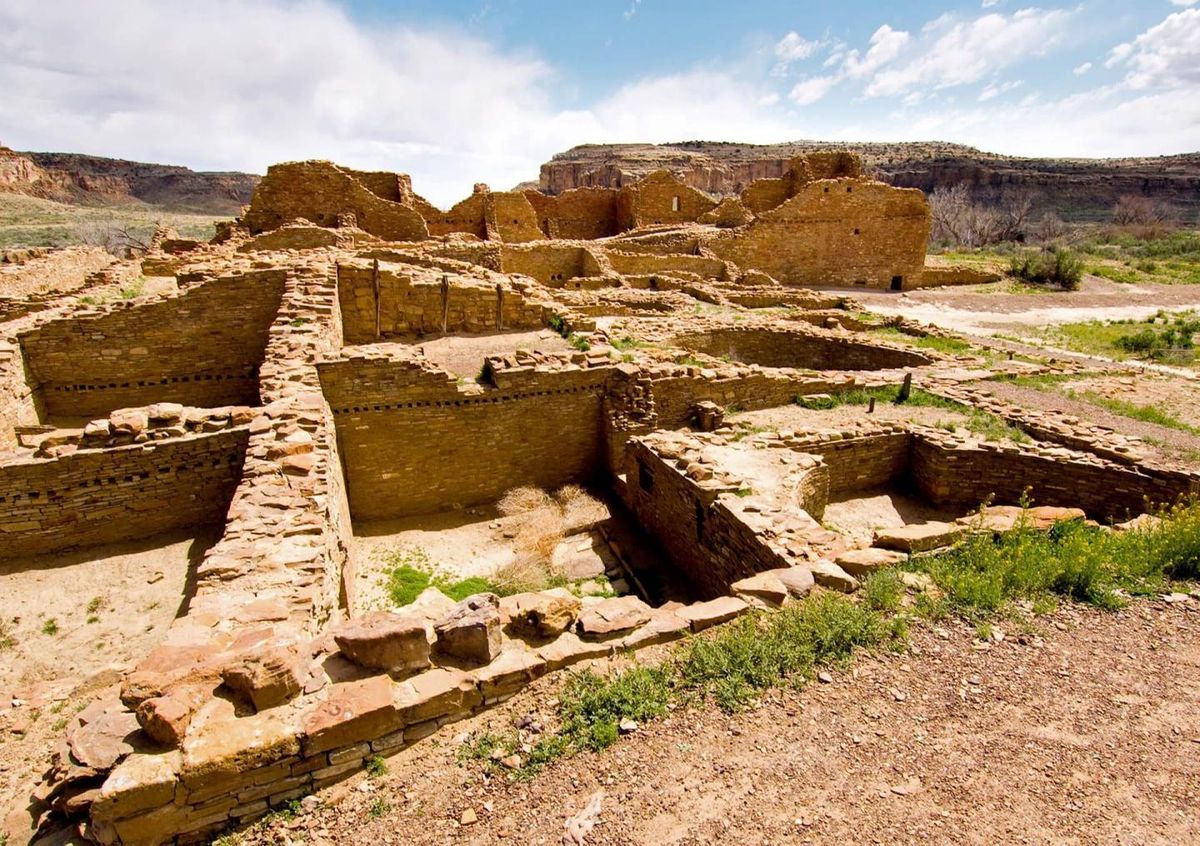Secrets Of New Mexico’s Chaco Culture Sites

Have you ever wondered what makes Chaco Culture sites in New Mexico so special? These ancient ruins, located in the remote desert, hold secrets of a civilization that thrived over a thousand years ago. Imagine walking among massive stone buildings, some of which were once five stories high. These structures were not just homes but also places for ceremonies and trade. The people who lived here were skilled astronomers, builders, and traders. They created a network of roads connecting their communities. Visiting Chaco Culture sites offers a glimpse into the ingenuity and resilience of these ancient people.
Secrets of New Mexico's Chaco Culture Sites
New Mexico's Chaco Culture National Historical Park is a treasure trove of ancient ruins and mysteries. This UNESCO World Heritage Site offers a glimpse into the lives of the Ancestral Puebloans. Let's dive into some of the most fascinating spots within this historic park.
Great Houses: Architectural Marvels
The Great Houses of Chaco Canyon are monumental structures that showcase the architectural prowess of the Ancestral Puebloans. These buildings were not just homes but also centers for ceremonies, trade, and governance.
Pueblo Bonito: The largest and most famous of the Great Houses, Pueblo Bonito is a massive, D-shaped structure with over 600 rooms. It served as a hub for social and ceremonial activities.
Chetro Ketl: Another impressive Great House, Chetro Ketl features a grand plaza and a series of kivas (ceremonial rooms). Its intricate masonry and design reflect the advanced engineering skills of its builders.
Casa Rinconada: Known for its enormous kiva, Casa Rinconada stands out due to its unique circular design. This kiva was likely used for important community rituals and gatherings.
Mysterious Petroglyphs and Pictographs
Scattered throughout Chaco Canyon are numerous petroglyphs and pictographs. These ancient rock carvings and paintings offer clues about the beliefs, rituals, and daily life of the Chacoan people.
Petroglyph Trail: This trail leads visitors past a series of rock panels adorned with intricate carvings. The images depict animals, human figures, and abstract symbols, each telling a story from the past.
Supernova Pictograph: Located in a remote part of the canyon, this pictograph is believed to represent the supernova of 1054 AD. It’s a testament to the Chacoans' keen observation of celestial events.
Astronomical Alignments: A Celestial Connection
The Chacoans had a deep understanding of astronomy, which they incorporated into their architecture. Many structures are aligned with celestial events, reflecting their sophisticated knowledge of the cosmos.
Fajada Butte: This prominent landmark features the famous "Sun Dagger" petroglyph. During solstices and equinoxes, sunlight passes through rock slabs to create patterns on the petroglyph, marking the changing seasons.
Pueblo Alto: Positioned on a high mesa, Pueblo Alto offers panoramic views of the surrounding landscape. Its strategic location suggests it was used for both astronomical observations and as a signaling point.
Roads and Trade Networks
Chaco Canyon was a major center of trade and communication. The Chacoans built an extensive network of roads connecting their settlements with distant regions, facilitating the exchange of goods and ideas.
Great North Road: This ancient road stretches north from Chaco Canyon, linking it with other significant sites. It highlights the extensive reach of Chacoan influence and their sophisticated infrastructure.
South Gap Road: Leading southward, this road connected Chaco Canyon with the broader Southwest. It underscores the importance of trade in Chacoan society, bringing in goods like turquoise, shells, and exotic birds.
Sacred Kivas: Spiritual Centers
Kivas were subterranean rooms used for religious ceremonies and community gatherings. These sacred spaces played a crucial role in the spiritual life of the Chacoans.
Kiva A: Located within the Pueblo Bonito complex, Kiva A is one of the largest and most elaborately decorated kivas. It features a central fire pit, benches, and niches for ceremonial objects.
Kiva Q: Found in Chetro Ketl, Kiva Q is notable for its well-preserved murals and intricate stonework. It provides valuable insights into the ceremonial practices of the Chacoans.
Outlier Communities: Beyond the Canyon
Chacoan influence extended far beyond the canyon itself. Numerous outlier communities were connected to Chaco Canyon through trade and cultural exchange.
Aztec Ruins: Located to the north, Aztec Ruins National Monument features structures similar to those in Chaco Canyon. It served as a regional center, continuing the Chacoan legacy.
Salmon Ruins: Situated along the San Juan River, Salmon Ruins is another significant outlier. It highlights the spread of Chacoan culture and its adaptation to different environments.
Discovering Chaco Culture's Timeless Legacy
Chaco Culture National Historical Park offers a unique glimpse into ancient Puebloan life. The massive stone structures, intricate road systems, and celestial alignments reveal a sophisticated society. Exploring these ruins, you can almost feel the presence of the people who once thrived here.
The park's remote location adds to its mystique, making each visit feel like a journey back in time. Whether you're hiking through the canyons or stargazing under the clear New Mexico sky, Chaco Culture leaves a lasting impression.
For history buffs, nature lovers, and adventurers alike, this UNESCO World Heritage Site is a must-see. It’s not just a trip; it’s an experience that connects you to a rich cultural heritage. Plan your visit to Chaco Culture and step into a world where history and nature intertwine seamlessly.

